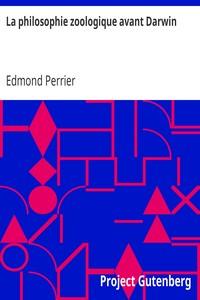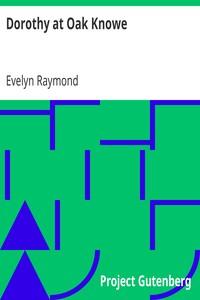Read this ebook for free! No credit card needed, absolutely nothing to pay.
Words: 47787 in 28 pages
This is an ebook sharing website. You can read the uploaded ebooks for free here. No credit cards needed, nothing to pay. If you want to own a digital copy of the ebook, or want to read offline with your favorite ebook-reader, then you can choose to buy and download the ebook.


: La philosophie zoologique avant Darwin by Perrier Edmond - Zoology History FR Sciences et Techniques
ortion, chaste simplicity, and conventionalism, triumphant; symbolism disregarded. The principal elements of Greek ornament were the honeysuckle, the lotus-leaves, the wave-line and scroll, the zig-zag, and the universal fret. The beauty of Grecian ornament consists in its equality of foliage, starting-points, stalks, and groundwork. Its running figures are well adapted to and are employed for rolls, in side-finishing, and the proportions of this style of Art should be carefully studied by the finisher.
ETRUSCAN.
Simplicity and elegance of form, combined with strong contrast in colour, constitute the distinguishing marks of this style. The Etruscan vases still form models for the artist. The novel appearance of these vessels, all uniformly painted with a tracery of black on a natural groundwork of brownish red, is extremely pleasing, proving the high artistic capability of their makers. In the British Museum there is one room entirely devoted to a collection of these remains of ancient Art. This style is approached in its effects by inlaying with black upon a brownish red. A copy of Caxton's "Recuyell of the Historyes of Troye," bound in this style by Whittaker, has been highly extolled. It is in the possession of the Marquis of Bath. The general effects of this style are represented by a style now much in vogue, called antique, a reddish-brown morocco being stamped upon so as to produce a dark or black figure thereon; but the character of the ornaments are generally dissimilar.
ROMAN.
Roman art is a redundant elaboration of the Greek, in which purity gives way to richness, grotesque combinations become common, and false principles creep in. Mosaic pavements are rendered pictorial by the introduction of light and shade, the flat and round not kept distinct. In the remains of Pompeii we find the degradation of classic Art by the violation of true principles. There is nothing in this style to commend it to the artist, especially in decorating books.
BYZANTINE, LOMBARD, NORMAN.
These varieties of kindred ornament, commencing with the rise of Christianity, were founded on classic details, having a distinct expression of their own. There is much symbolism in the Byzantine, but all are appropriate to their several wants,--the parts rich, judiciously disposed, and purely conventional. In these styles, so intimately connected, we find the interlaced strap-work that suggested Gothic tracery to the great mediaeval artists.
MOORISH.
The decorative art of the Arabs is more conventional than any other, it being in most cases extremely difficult to trace the origin of their forms. All animal representations are strictly excluded by the religion of Mohammed. The union of geometrical with floral forms seems to have supplied the expression, many ornaments resembling the ovary of plants, transversely cut and connected with crystalline shapes. The abstract and superficial treatment is perfect, the forms are extremely graceful, and the colouring gorgeous. The interlaced strap-work is highly elaborated. This style is sometimes called the Arabesque, and forms the chief decoration of the Alhambra, an ancient fortress and residence of the Moorish monarchs of Granada. For grace and liveliness this style is unrivalled, and it affords many useful and beautiful hints to the finisher in his hand-tooling, and is well calculated to produce fine effects in stamps designed for the embossing-press.
GOTHIC.
The Gothic is founded upon geometrical forms. The strap-work of former styles is elaborated into tracery, the main lines being circular or curved, starting from vertical lines, ending in points, enclosing spaces divided and subdivided in the same manner, further decorated with conventional ornaments derived from local nature. For bookbinding it is sometimes employed, but without much judgment. The judicious finisher will reject it on account of its inapplicability to superficial decoration.
THE RENAISSANCE.
Free books android app tbrJar TBR JAR Read Free books online gutenberg
More posts by @FreeBooks

: Pero da Covilhan: Episodio Romantico do Seculo XV by Brand O Zephyrino - Covilhã Pêro da Fiction PT Romance







